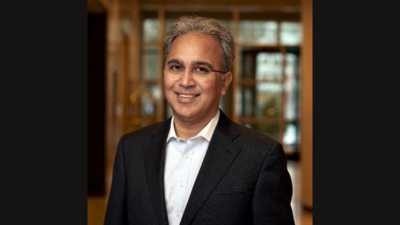‘Investors have faith in India, capex happening’

Rajiv Memani, chairman and CEO of consulting firm EY India has taken over as the new president of CII (Confederation of Indian Industry) at a critical juncture for India Inc. In an interview to TOI, Memani says the overall health of businesses is not bad and he expects a reasonably strong bounce-back in growth. Excerpts:Some numbers point to a slowdown in Q1. What is your assessment of current economic situation?There are some sectors where the growth has been good. Some sectors have been impacted in terms of profitability due to the geopolitical situation, the global trade-related uncertainty and the earlier onset of monsoons. But the overall health of businesses is not bad. Overall GST collection in the first quarter is still 11-12%, it’s not bad. In the low-to-middle income segments in urban areas, there is some pressure. But outside of that it’s okay. Rural consumption is becoming more robust. With lower interest rates, lower inflation, more crop sowing, there is expectation that the bounce-back should be reasonably strong and we should be looking at the GDP numbers that we had estimated.

Tax incentives were announced in Budget. Is there evidence of higher spends by consumers, especially middle class?It is too early to say. The pattern of consumption is changing. So, sometimes traditional measures don’t fully indicate where consumption is happening. People are spending much more on technology, much more on experiences than in traditional areas. But I am sure that in some form or shape consumption will increase whether it’s in travel technology or in the traditional areas.What about private investment?Private investment has been growing. There’s a general myth that private investments are not happening. It is happening. If you look at every data, after 2020, for a year or two before Covid and for a year or two after that it was slow. But from 2022-23 onwards private sector investments have picked up. There are three or four things, which are impacting decisions. One is global uncertainty; second, demand in some areas has not been as strong as anticipated, time taken for approvals for land, environmental clearances in states and lack of skilled manpower for large projects in newer areas. If I was planning a capex of, say, Rs 1,000 crore, given the uncertainty, I will probably reduce it to Rs 600-700 crore. But, the fundamental focus on growth, fundamental belief in India, strength in the balance sheet, seeing what’s happening in the capital markets, lower interest rates, that will make investments come through.What is your expectation on US tariffs? Do you expect a deal?The engagement has been very intense. The level of detailing is very high. Not everyone is going to probably get the best deal. At an overall level, the industry would benefit and is keen to ensure that India enters into a bilateral trade agreement and not wait for 26% duty to come through.How is industry bracing for tariff cuts as govt is working on multiple FTAs?We are trying to see how we can mitigate the non-tariff barriers as part of the FTA talks. There are a lot of complementarities with the current set of countries with which FTAs are being signed. Indian industry is very clear that on an average duties could come down by 5-20%. If that is the gap, there has to be much more focus on competitiveness, including internal competitiveness through investment in R&D and other areas. The other is in terms of factors of production such as land, or energy, logistics and cost of capital. CII has set up a committee to address the issue of competitiveness.





